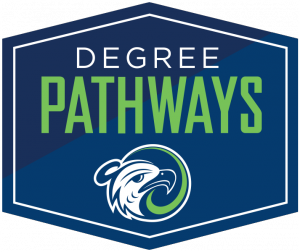
Resources about Guided Pathways
(just a brief reminder that although the term “Guided Pathways” is used in the timeline, it means the same as “Degree Pathways” for Highline)
Guided pathways are a framework for redesigning an entire community college to 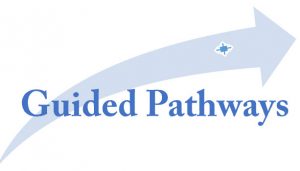 improve the student experience for everyone, from entry through graduation. Guided pathways initiatives involve:
improve the student experience for everyone, from entry through graduation. Guided pathways initiatives involve:
- reforms in advising and registration processes to help all students identifytheir goals early in their academic careers
- improvements in how students are supported throughout their courses of study
- clear “maps” for each program of study that guide students as they select courses, and
- programs that, ideally, are aligned with career opportunities in the labor market. (from JFF.org)
_____________________________
Some Books, Some Articles, Some Websites
Books
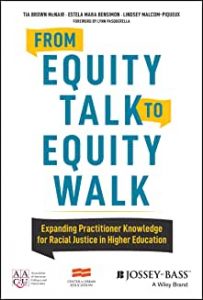 McNair, Tia Brown, et al. From Equity Talk to Equity Walk : Expanding Practitioner Knowledge for Racial Justice in Higher Education . First edition., Jossey-Bass, a Wiley Brand, 2020. (print book in Highline Library collection)
McNair, Tia Brown, et al. From Equity Talk to Equity Walk : Expanding Practitioner Knowledge for Racial Justice in Higher Education . First edition., Jossey-Bass, a Wiley Brand, 2020. (print book in Highline Library collection)
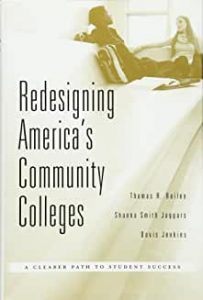 Bailey, Thomas R, Jaggars S. Smith, and Davis Jenkins. Redesigning America’s Community Colleges: A Clearer Path to Student Success. 2015. (Link to this e-book in Highline Library)
Bailey, Thomas R, Jaggars S. Smith, and Davis Jenkins. Redesigning America’s Community Colleges: A Clearer Path to Student Success. 2015. (Link to this e-book in Highline Library)
Articles
Jenkins, Davis, and Sung‐Woo Cho. “Get With the Program … and Finish It: Building Guided Pathways to Accelerate Student Completion.” New Directions for Community Colleges, vol. 2013, no. 164, Winter 2013, pp. 27–35. (link)
Schudde, Lauren T., et al. “Major Movement: Examining Meta-Major Switching at Community Colleges.” Review of Higher Education, vol. 44, no. 2, Johns Hopkins University Press, 2020, pp. 189–235. (link)
![]() Websites
Websites
Guided Pathways Resource Center: Tools and Resources for Colleges
![]() What are We Learning about Guided Pathways?
What are We Learning about Guided Pathways?
![]() Investing in Student Success at Community Colleges (April 2021)
Investing in Student Success at Community Colleges (April 2021)
_____________________________
Some Background on Guided Pathways
![]()
![]() What We are Learning about Guided Pathways
What We are Learning about Guided Pathways
From the Community College Research Center (CCRC) at Columbia University. This is a series of slides in a pdf document giving a good overview of the guided pathways model and the college redesign process in adopting it.
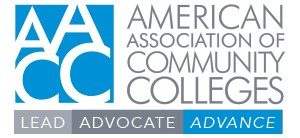
Implementing Guided Pathways: Early Insights From the AACC Pathways Colleges
The American Association of Community Colleges (AACC) issued a report in 2017 that “provides insight into how colleges are planning and implementing “guided pathways” reforms based on the early work of 30 colleges participating in the American Association of Community Colleges’ (AACC) Pathways Project. These colleges have committed to redesigning their programs and support services for all incoming students by fall 2018 according to the guided pathways model adopted by AACC based on CCRC’s research.”
![]() Download the Executive Summary of the Report (6 pages)
Download the Executive Summary of the Report (6 pages)
![]() Download the Entire Report (66 pages)
Download the Entire Report (66 pages)
![]() AACC – What is the “Pathways Model?” (2 pages)
AACC – What is the “Pathways Model?” (2 pages)
![]() CCRC – Implementing Guided Pathways-Tips and Tools (8 pages)
CCRC – Implementing Guided Pathways-Tips and Tools (8 pages)

Washington State Board of Community and Technical Colleges
Go here to see more about the SBCTC and guided pathways, including its vision, mission, and guiding principles regarding guided pathways.
The SBCTC has prepared an online resource center for community and technical college faculty, staff and practitioners is organized by overarching topics . These topics include an overview, access and onboarding, program mapping, completion and transfer, career and labor market, technology, and leadership.
Terms to Know
A guided pathway “is a descriptive and easy-to-use plan that guides students into and through college to the successful completion of a credential and the transition to a baccalaureate program or the labor market. A guided pathway integrates academic and student services together in a coherent and intentional system of curricular and co-curricular experiences that match a student’s interests and goals, and better prepares them for success in a rapidly changing global environment.” (from “Building Guided Pathways: Practical Lessons from Completion by Design Colleges”)
Highline Pathways are the broad, thematic areas that cluster similar programs. (Other colleges use the term “meta-majors” to refer to what we call Highline Pathways.)
Program means the set of courses leading to a degree or to a certificate.
Program/degree maps: easy-to-read guides that show what courses students need to take in order to complete a program (a degree or certificate) including the specific math requirement, the order in which courses should be taken, and deadlines for completing scholarships, financial aid, and advising appointments. Program maps show students how they can complete a two year degree in two years if they attend full-time, and how they can complete their degree over a longer time frame by attending part-time.
Academic plan: a student’s plan for completing a specific program. These are based on the program/degree maps and the student’s individual goals. Each student creates an academic plan in consultation with an assigned advisor.
Gatekeeper courses: are courses, in addition to math and English, that students must take to complete the program. Courses are gatekeepers when they act as barriers to student progression, like the first course in a series or a course that is a prerequisite for other courses in the program.
